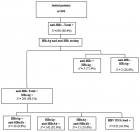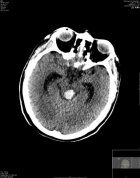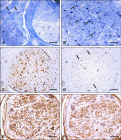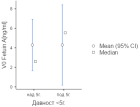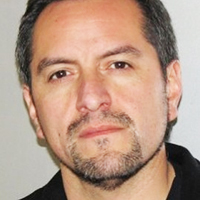Abstract
Review Article
Review on Forensic Analysis of Microbiota in Human
Suman Singh* and Jiya Agarwal*
Published: 04 July, 2024 | Volume 8 - Issue 1 | Pages: 025-027
Numerous studies relate differences in microbial communities to humans. The microbiome is fundamental for the human turn of events, invulnerability, and nourishment. The ordinary microbiota has explicit capability in supplement digestion, xenobiotic and drug digestion, upkeep of underlying trustworthiness of the stomach mucosal boundary, immunomodulation, and assurance against microorganisms. Out of nowhere, it assumes a significant part in criminology. In a few criminal examinations, such perceptible changes in the microbiome and mycobiome can decide the reason or the genuine spot of death. The microbial follows found at the crime location can likewise give obvious proof of responsibility. The point of this audit was to study the microbiome and its applications in scientific sciences and to decide the primary lines of examination that are emerging, as well as its potential commitments to the scientific field.’
Read Full Article HTML DOI: 10.29328/journal.jfsr.1001060 Cite this Article Read Full Article PDF
Keywords:
Immunology; Xenobiotic; Mycobiome; Mucosal
References
- Roux C, Talbot-Wright B, Robertson J, Crispino F, Ribaux O. The end of the (forensic science) world as we know it? The example of trace evidence. Philos Trans R Soc Lond B Biol Sci. 2015; 370(1674):20140260. Available from: https://pubmed.ncbi.nlm.nih.gov/26101285/
- Using the Microbiome to Unlock the Secrets of Forensic Evidence: Classification of the Body Source of Origin of Human Traces. Available from: https://www.qiagen.com/us/knowledge-and-support/knowledge-hub/events-and-webinars/webinars/using-microbiome-to-unlock-secrets-of-forensic-evidence
- Metcalf JL, Parfrey WL, Gonzalez A, Lauber CL, Knights D, Ackermann G, et al. A microbial clock provides an accurate estimate of the postmortem interval in a mouse model system. Elife. 2013; 15; 2:e01104. Available from: https://pubmed.ncbi.nlm.nih.gov/24137541/
- Inman K, Rudin N. The origin of evidence. Forensic Sci Int. 2002; 126(1):11-6. Available from: https://pubmed.ncbi.nlm.nih.gov/11955825/
- Bouslimani A, Melnik AV, Xu Z, Amir A, da Silva RR, Wang M, et al. Lifestyle chemistries from phones for individual profiling. Proc Natl Acad Sci. USA. 2016; 113(48):E7645-E7654. Available from: https://pubmed.ncbi.nlm.nih.gov/27849584/
- Harbison SA, Fleming RI. Forensic body fluid identification: State of the art. Rep. Forensic Med. Sci.2016; 6: 11-23. Available from: https://www.dovepress.com/forensic-body-fluid-identification-state-of-the-art-peer-reviewed-fulltext-article-RRFMS
- Hanssen EN, Avershina E, Rudi K, Gill P, Snipen L. Body fluid prediction from microbial patterns for forensic application. Forensic Sci Int Genet. 2017; 30:10-17. Available from: https://pubmed.ncbi.nlm.nih.gov/28605650/
- Dobay A, Haas C, Fucile G, Downey N, Morrison HG, Kratzer A, et al. Microbiome-based body fluid identification of samples exposed to indoor conditions. Forensic Sci Int Genet. 2019; 40:105-113. Available from: https://pubmed.ncbi.nlm.nih.gov/30785061/
Figures:
Similar Articles
-
Review on Forensic Analysis of Microbiota in HumanSuman Singh*, Jiya Agarwal*. Review on Forensic Analysis of Microbiota in Human. . 2024 doi: 10.29328/journal.jfsr.1001060; 8: 025-027
Recently Viewed
-
A Low-cost High-throughput Targeted Sequencing for the Accurate Detection of Respiratory Tract PathogenChangyan Ju, Chengbosen Zhou, Zhezhi Deng, Jingwei Gao, Weizhao Jiang, Hanbing Zeng, Haiwei Huang, Yongxiang Duan, David X Deng*. A Low-cost High-throughput Targeted Sequencing for the Accurate Detection of Respiratory Tract Pathogen. Int J Clin Virol. 2024: doi: 10.29328/journal.ijcv.1001056; 8: 001-007
-
A Comparative Study of Metoprolol and Amlodipine on Mortality, Disability and Complication in Acute StrokeJayantee Kalita*,Dhiraj Kumar,Nagendra B Gutti,Sandeep K Gupta,Anadi Mishra,Vivek Singh. A Comparative Study of Metoprolol and Amlodipine on Mortality, Disability and Complication in Acute Stroke. J Neurosci Neurol Disord. 2025: doi: 10.29328/journal.jnnd.1001108; 9: 039-045
-
Development of qualitative GC MS method for simultaneous identification of PM-CCM a modified illicit drugs preparation and its modern-day application in drug-facilitated crimesBhagat Singh*,Satish R Nailkar,Chetansen A Bhadkambekar,Suneel Prajapati,Sukhminder Kaur. Development of qualitative GC MS method for simultaneous identification of PM-CCM a modified illicit drugs preparation and its modern-day application in drug-facilitated crimes. J Forensic Sci Res. 2023: doi: 10.29328/journal.jfsr.1001043; 7: 004-010
-
A Gateway to Metal Resistance: Bacterial Response to Heavy Metal Toxicity in the Biological EnvironmentLoai Aljerf*,Nuha AlMasri. A Gateway to Metal Resistance: Bacterial Response to Heavy Metal Toxicity in the Biological Environment. Ann Adv Chem. 2018: doi: 10.29328/journal.aac.1001012; 2: 032-044
-
Obesity in Patients with Chronic Obstructive Pulmonary Disease as a Separate Clinical PhenotypeDaria A Prokonich*, Tatiana V Saprina, Ekaterina B Bukreeva. Obesity in Patients with Chronic Obstructive Pulmonary Disease as a Separate Clinical Phenotype. J Pulmonol Respir Res. 2024: doi: 10.29328/journal.jprr.1001060; 8: 053-055
Most Viewed
-
Evaluation of Biostimulants Based on Recovered Protein Hydrolysates from Animal By-products as Plant Growth EnhancersH Pérez-Aguilar*, M Lacruz-Asaro, F Arán-Ais. Evaluation of Biostimulants Based on Recovered Protein Hydrolysates from Animal By-products as Plant Growth Enhancers. J Plant Sci Phytopathol. 2023 doi: 10.29328/journal.jpsp.1001104; 7: 042-047
-
Sinonasal Myxoma Extending into the Orbit in a 4-Year Old: A Case PresentationJulian A Purrinos*, Ramzi Younis. Sinonasal Myxoma Extending into the Orbit in a 4-Year Old: A Case Presentation. Arch Case Rep. 2024 doi: 10.29328/journal.acr.1001099; 8: 075-077
-
Feasibility study of magnetic sensing for detecting single-neuron action potentialsDenis Tonini,Kai Wu,Renata Saha,Jian-Ping Wang*. Feasibility study of magnetic sensing for detecting single-neuron action potentials. Ann Biomed Sci Eng. 2022 doi: 10.29328/journal.abse.1001018; 6: 019-029
-
Pediatric Dysgerminoma: Unveiling a Rare Ovarian TumorFaten Limaiem*, Khalil Saffar, Ahmed Halouani. Pediatric Dysgerminoma: Unveiling a Rare Ovarian Tumor. Arch Case Rep. 2024 doi: 10.29328/journal.acr.1001087; 8: 010-013
-
Physical activity can change the physiological and psychological circumstances during COVID-19 pandemic: A narrative reviewKhashayar Maroufi*. Physical activity can change the physiological and psychological circumstances during COVID-19 pandemic: A narrative review. J Sports Med Ther. 2021 doi: 10.29328/journal.jsmt.1001051; 6: 001-007

HSPI: We're glad you're here. Please click "create a new Query" if you are a new visitor to our website and need further information from us.
If you are already a member of our network and need to keep track of any developments regarding a question you have already submitted, click "take me to my Query."






